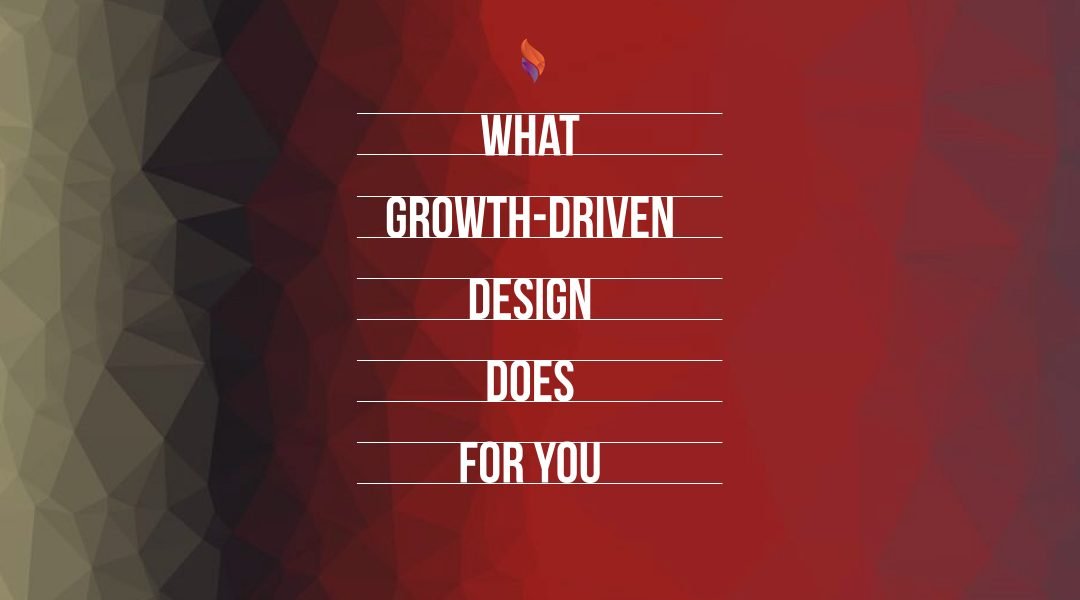Web development is in a constant state of flux. User expectations shift and evolve at an accelerated rate, which means the functionality and aesthetic of your site can seem old-fashioned and irrelevant even a year after launch.
To make matters even more challenging, technologies also change, older frameworks become obsolete and fall out of favor, while newer frameworks and build tools take the stage, bringing a whole host of new technological challenges and paradigms for your programmers.
How can modern businesses survive in such a rapidly changing landscape? More specifically, can the traditional website design model keep pace with the demands of the modern web?
The Future Is Growth-Driven Design
The traditional website design process is time-consuming and inflexible by nature: First your team defines marketing goals. Then, after weeks of deliberation, you can start articulating a message and writing content for the actual site based on your marketing strategy.
What Growth-Driven Design Does For You and Your Website!
Once the content is ready, your designers can get to work making wire-frames and crafting an aesthetic that speaks to your target audience. Finally, the programmers enter the picture, and then QA for testing, and finally after months, perhaps a year, of consistent effort you deploy the site and hope for the best.
Traditional Web Design Vs Growth-Driven Design
Using the traditional design process, the up-front costs for your site are substantial, and your marketing strategy is essentially guesswork made before any users interact with your site. Does the site need a redesign? Now you can look forward to another year of work and even more money spent.
We need a new, agile model of site development that offers more stamina, more flexibility, and more real-time user data. The strategy your business needs is growth-driven design. With growth-driven design (GDD), you create and deploy a launchpad site in as little time as one month.
After the launchpad site is deployed, you gather data on user behavior and make incremental changes to the content and design based on the data.
- When are users visiting the site?
- Where do they navigate most frequently?
- Are they spending enough time on the right pages?
As you accumulate data, you identify target personas and create a more comprehensive portrait of your user base. The traditional design process is based on speculation and hypothetical clients, whereas GDD offers empirical analysis and a more intimate connection with real users.
Growth-Driven Design Adapts To Your Visitor’s Real Activity
The growth-driven approach embraces continuous development and minimizes the risk of complete redesign. You can think of your launchpad site as a foundation upon which you build and optimize. With the launch pad site deployed and generating user data, your designers and programmers can continuously make changes that reflect the needs and sensibilities of your user base.
Marketing and sales analyze the incoming data and work with the development team in an ongoing process of optimization. The launch pad site also requires a fraction of the upfront costs, which means your team has more funds available to improve and innovate.
In the early days of the web, designing a site was akin to creating a billboard for advertising by the highway. The design was static and unchanging until you created an entirely new site and marketing strategy after a few years. In the modern landscape the traditional approach is expensive, unreliable, and damaging to your business. Here at ThinkFlame, we offer the expertise and insight you need to revitalize your design process, and we can help your business make a smooth transition to GDD.
Use Growth Goals to Drive Your Website Choices
You can keep using the older methods. You could even switch entirely to billboard advertising for your products and services.
Who uses the web anymore?
Or you could invigorate your design process and truly embrace the accelerated vitality and potential of the web. Contact us today and get started.
Book Your Free Consultation Today

Jonathan Perea is a Business Development Manager at ThinkFlame. He started his career as a professional baseball player and continues to enjoy teaching kids through his elite coaching program. This experience has given him the ability to really listen to our customer’s needs, understand their business challenges and help coach them through a plan to achieve their goals.

